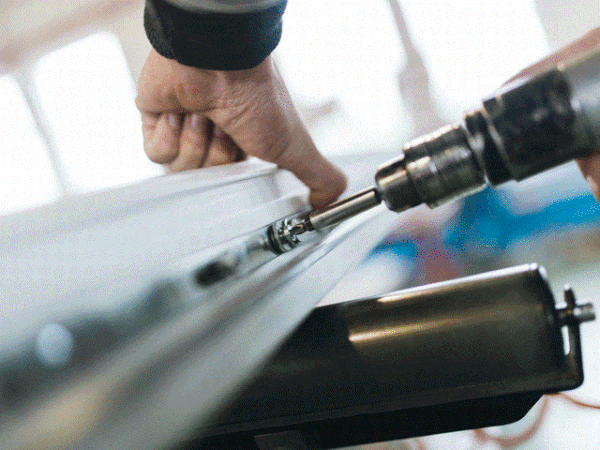Have you ever thought about whether you are assembling windows and doors in the best possible way? Even though today’s profiles, reinforcement and hardware are all designed with decent tolerances to give us the leeway that’s so important in a fast-moving manufacturing environment, it is still important to think about the minor changes that you can make to your assembly techniques that will make a big difference to finished product quality.
Creating high quality windows and doors does, of course, mean having the right starting point. That includes having the correct range of screws at your disposal for attaching all the different types of hardware you will be using day-to-day, as well as for structural purposes where required, and the right tools.
Providing everything is in place on that front, it is important to think about your process for inserting screws into the frame and reinforcement. Every window and door is a bespoke product so they will all differ very slightly from each other, but it is possible to achieve a level of consistency in the assembly process.
One of the most important steps you can take is to ensure screws are inserted at 90 degrees – or as close to this as possible. Why is this so important? It all comes down to the way fasteners are designed.
Fasteners are the lowest cost components used in the window making process so it may be easy to regard them as commodity products that largely all do the same job. The truth is that they are actually designed for precision and a critical component in making windows and doors strong, secure and able to perform as designed.
Take the design of screw threads. These are developed to enable a strong attachment and high pull-out strength in varying materials, including PVCu profile and steel reinforcement. Other factors, such as the screw length and its diameter, point style and head form, will also determine how effective a screw is once it is installed.
So what happens when you are fitting a piece of hardware and your screws go in at a slight angle? Not the end of the world is it?
Perhaps not, but there is no way of knowing until the window or door is installed in the customer’s property and they have been using it for a while, or it is subjected to an unexpected or severe impact.
The good news is that through the state-of-the-art equipment we have installed at the newly expanded Rapierstar technical centre, we have the ability to look into scenarios like this in detail. And it allows us to provide insights that have never before been possible.
One customer recently approached us to investigate an issue which perfectly illustrates the problem with ‘wonky’ screws.
The issue involved a PVCu door’s flag hinge becoming detached from the outer frame as a result of the screws breaking. In situations like this, an immediate and seemingly plausible assumption may be that the screws were not up to the required quality, hence they quickly weakened and broke.
However, given that thousands of similar door sets are made every year using this same design of flag hinge and profile system, we needed to assess what was unique about this door for the detachment to occur.
Combining close visual inspection with what we call Finite Element Analysis (FEA) of computer generated models, which predicts how a product reacts to real-world forces, vibration, heat, fluid flow and other physical effects, we were able to establish the cause.
We found that the screws had sheared as a result of them not being inserted straight – they were at varying angles rather than being perpendicular to the frame. As a result, when the screws were inserted through the frame and into the steel reinforcement at an unusual angle, a series of stresses will have been put on the screw shanks. Ultimately, this will have caused the screw to shear, fracture and snap.
So what does this tell us about assembly techniques on the production line? Well, being able to conduct such a thorough analysis of an unusual situation like this will certainly help the industry improve quality in the long term because it confirms best practice. This has always been to insert window screws at 90 degrees, but now we can support this advice with evidence of what can happen if you don’t.
To discuss this and other ways to get the optimum result from window and door fasteners, please contact us.
This email address is being protected from spambots. You need JavaScript enabled to view it. Technical & Marketing Manager at Rapierstar Tweet to @andyhol1







